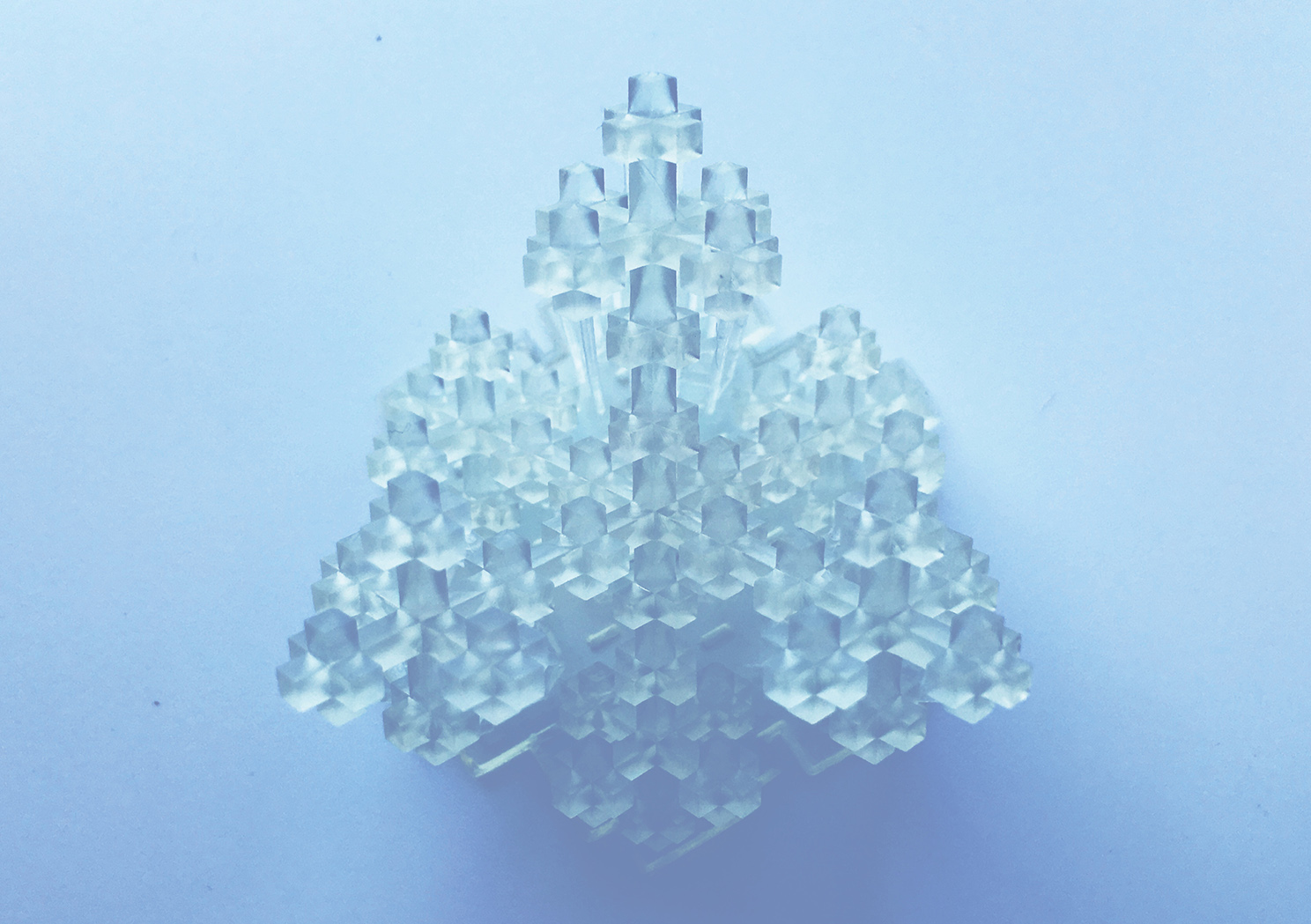Institute of Industrial Science, The University of Tokyo
Art installation
Digital parametric design/Communication design, Tokyo
• NY ADC (Art Directors Club) Annual Award *Digital parametric design/Digital communication
• A’ Design Award (Italian Design Award) “Bronze” *Digital parametric design/Digital communication
Creative Director/Artist: Midori Yamazaki
Designing Synthesis of KONPEITO
Designing Synthesis of KONPEITO
This project is the result of a cross-disciplinary collaboration between Kozo Keikaku Engineering Inc (KKE), the University of Tokyo’s Institute of Industrial Science (IIS) Ogura and Niino laboratories, and the DLX Design Lab. The theme of the project is “Konpeito” which is Japanese traditional candy, and the research was conducted from an engineering perspective using the iGRAF, the granular flow simulation software to investigate the mechanism of Kompeito formation and to create a new form of traditional technology.
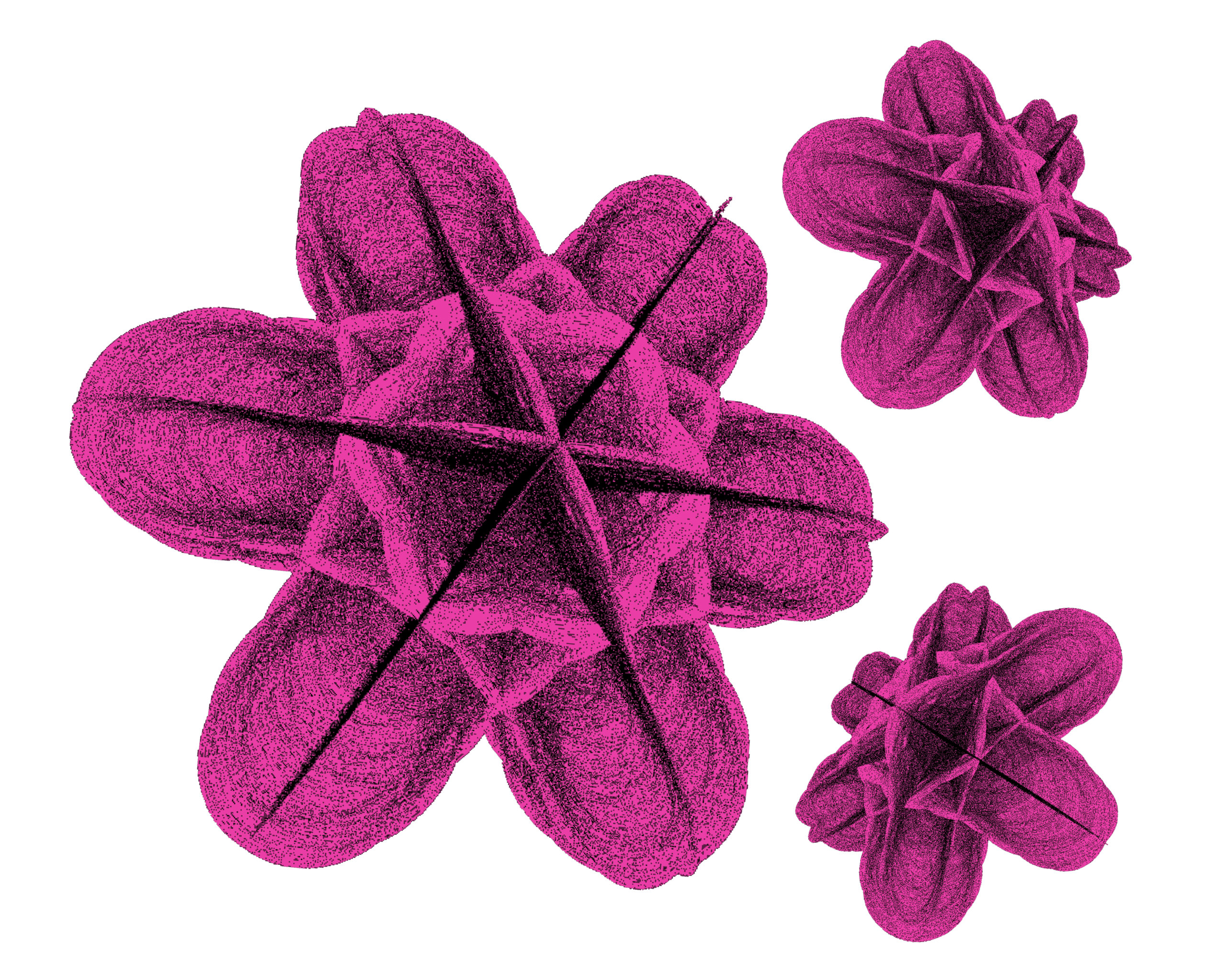
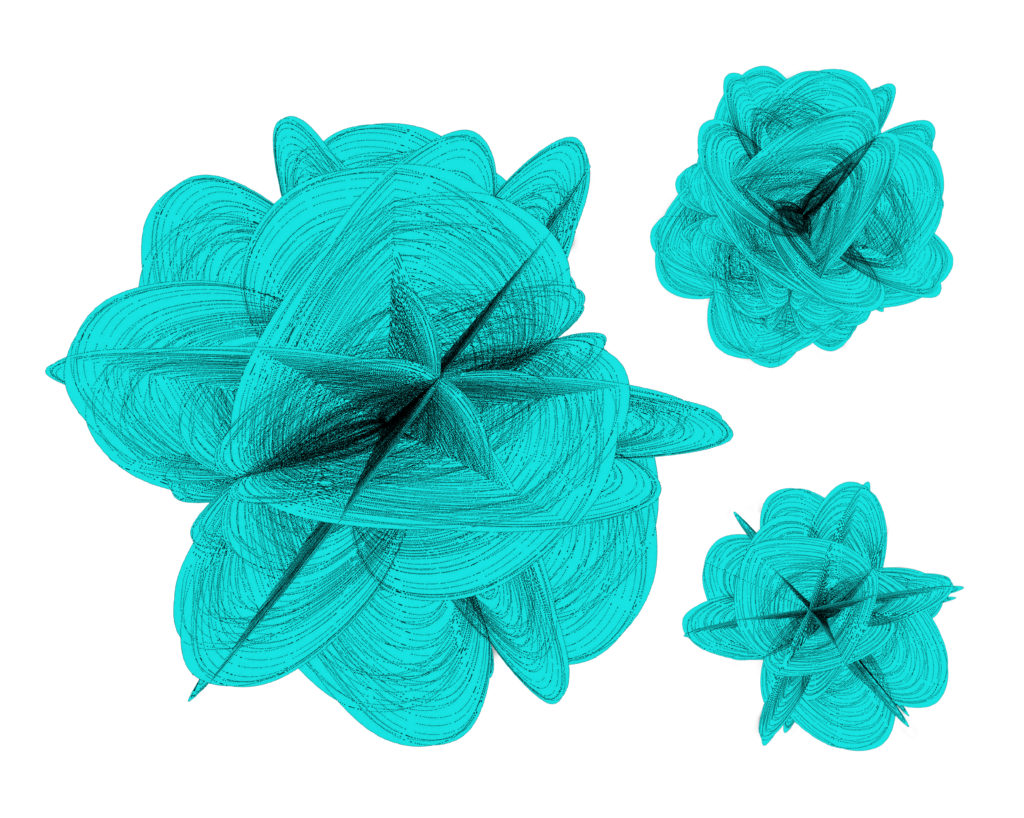
A prototype of Future Konpeito, created by computer programming with the application of natural algorithms.The secret of Kompeito’s shape
The secret of Kompeito’s shape
A traditional Japanese candy made of crystallized sugar, Konpeito is just a lump of sugar, so to speak, but it has a shape that we find pleasing. Why does it have such a shape? Isn’t that a design in itself? This was the beginning of the Konpeito project. The production of Kompeito requires a high level of skill from trained craftsmen and a very time-consuming process, which is why the number of companies producing Kompeito is decreasing every year. The unique protrusions of Kompeito are formed when molasses sticks to the core of the sugar and then break away. It is believed that this is related to called diffusion-limited aggregation, which is an algorithm in nature, represented by snowflakes, that has regularity in its randomness. The approach of the DLX Design Lab was to apply that algorithm to computer programming and design an experimental Kompeito prototype while focusing on developing a larger framework as a design, a vision, and a concept of simulation to provide inspiration for this project. What is also interesting is that by applying algorithms we were able to create a shape similar to the Kompeito, discovering a common element within the different disciplines of design and science.
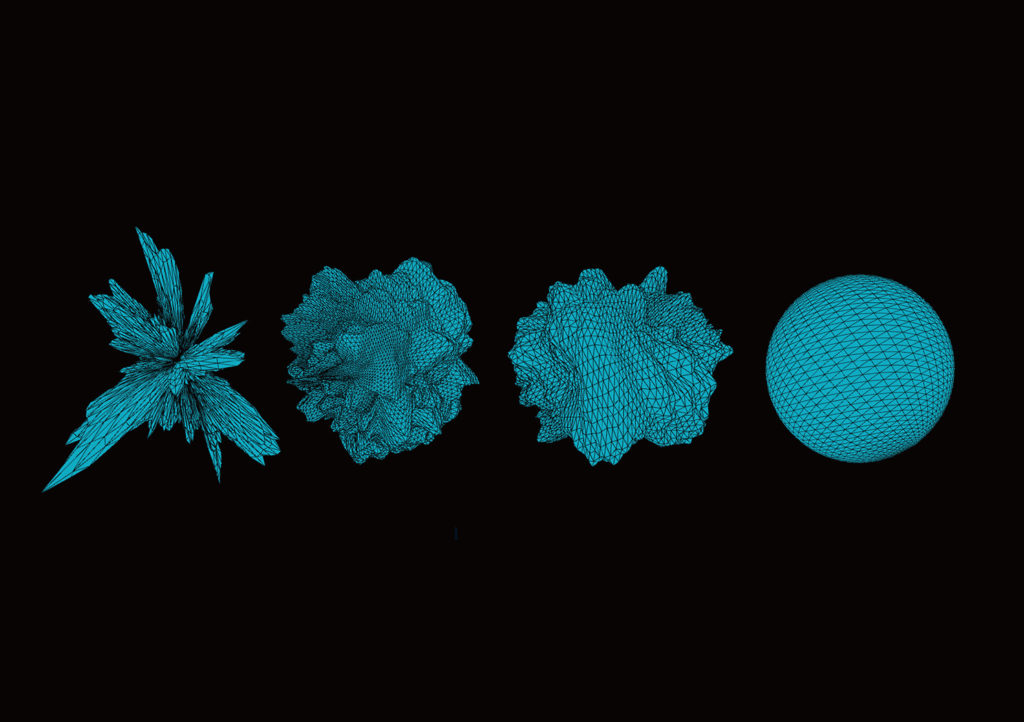
A natural algorithm is applied step by step to compare the shapes.Possibility of simulation
Possibility of simulation
KKE’s approach was to use the iGRAF the granular flow simulation software to replicate the big pan as closely as possible, and to try various simulations. If you are not familiar with simulation, it has been used to verify theories and experiments. Nowadays, however, simulations are being used in a wider range of fields, such as a substitute for experiments that are difficult to carry out, and can reproduce conditions closer to “reality”. In this project, despite the lack of information due to the effects of the Covid-19 pandemic, we used various simulations to create a prototype model of the inside of the big pan where Kompeito is made, and with the collaboration of Mr. Ogata, we were able to learn about the mechanism behind the formation of the shape of Kompeito, and make discoveries that will lead to the creation of value in different fields such as environmental catalysis and materials science.
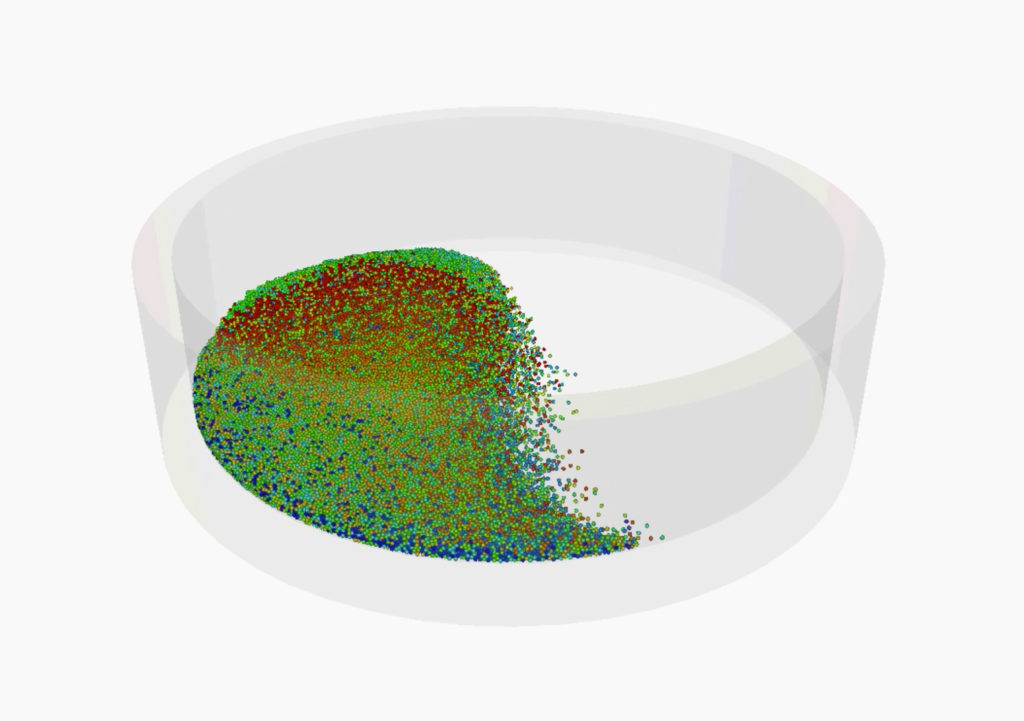
Simulation of Konpeito production using iGRAF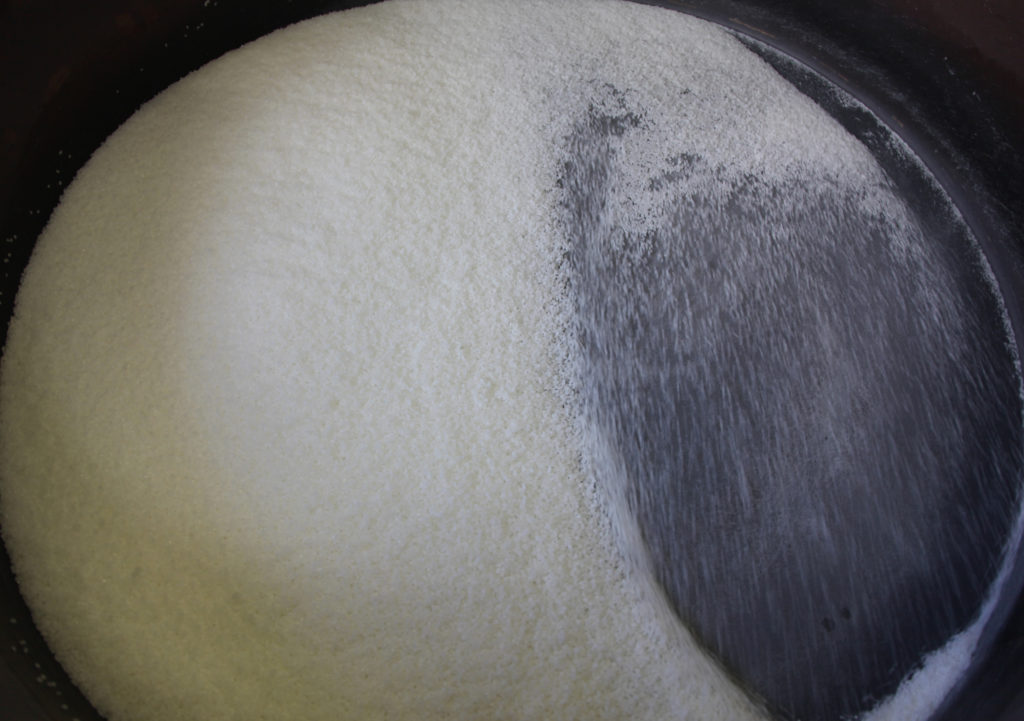
The big pan where Kompeito is madeThe future of
The future of traditional technology
Masaru Ogata, President of Ogata Confectionery, is responsible for all aspects of the production of Kompeito, a traditional technique that has been used for over 400 years. The morning at Ogata Confectionery starts at 7.30am. On a cold winter’s day, the temperature in the room is 40 degrees. Mr. Ogata has been making Kompeito for more than 30 years in such an environment, and his business performance has risen almost steadily, showing the high level of his skills. However, as a craftsman, he still believes that there is room for growth in his skills, and the challenge is to nd the right balance between his successor, staff management, and honing his own skills. Traditional skills are also known as tacit knowledge, one of the intelligences that make up a world that is difficult to capture in data. Although traditional skills can become obsolete, it is possible to share information and experiences in cross-disciplinary collaborations to raise awareness of each other’s tacit knowledge and synergistically enhance it. Collective knowledge has a power that cannot be attained by individuals alone.
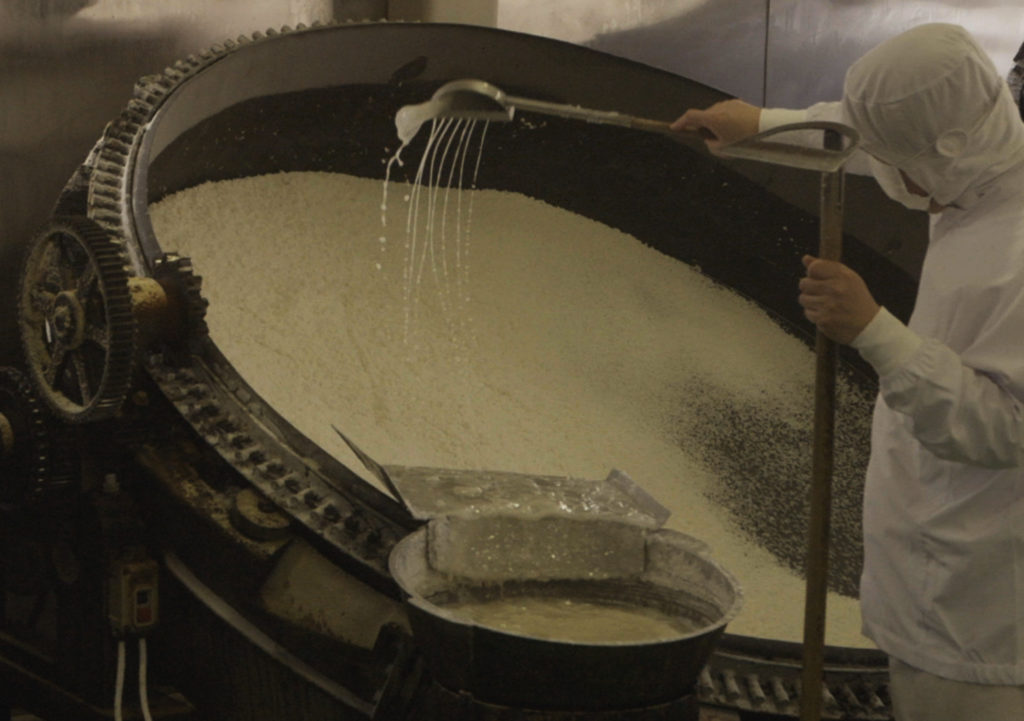
Production of Konpeito (
lmed at Ogata Seika)In this project
In this project, the collaboration with Mr. Ogata, who is a traditional craftsman, allowed us to make discoveries that lead to value creation in different fields such as environmental catalysis and materials science. Professor Ken Ogura of IIS specializes in environmental catalysis and materials science, approaching issues such as the environment, resources, and energy by making use of porous materials with many holes. The technology that Ogura Lab usually controls at the nanometer and micrometer scales, such as the growth of crystals against the core of Kompeito and the formation of protrusions by controlling the orientation and speed of growth, was surprisingly found to be used at a visible size in the traditional production of Kompeito. This discovery holds great promise for further development, and through the DLX Design Lab, the knowledge of researchers, the technical skills of companies, and the dwindling traditional techniques are beginning to lead to the creation of new value.
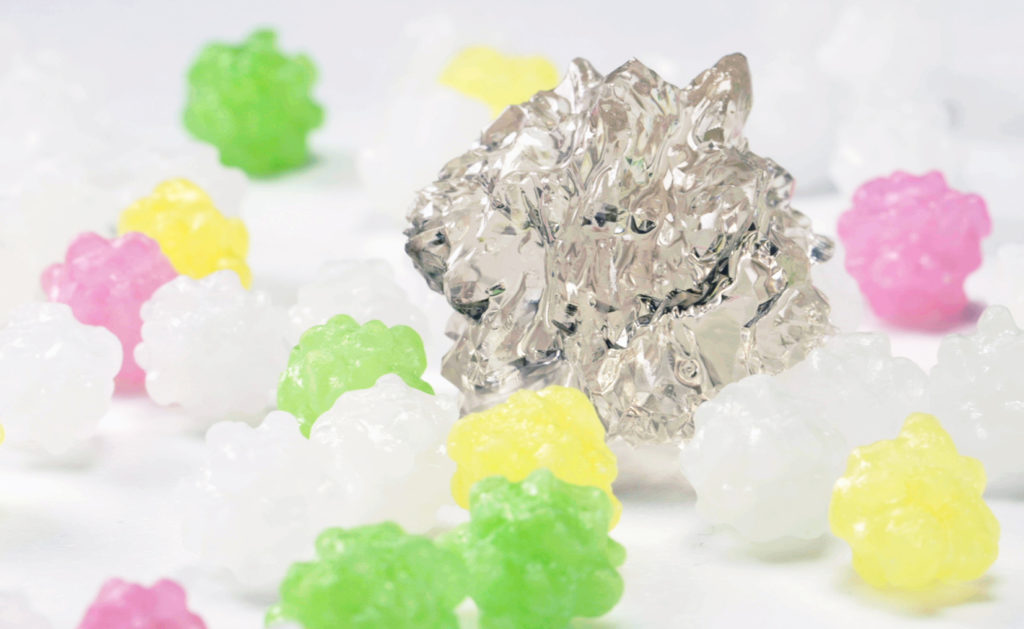
Original Konpeito and 3D output Konpeito prototypes
